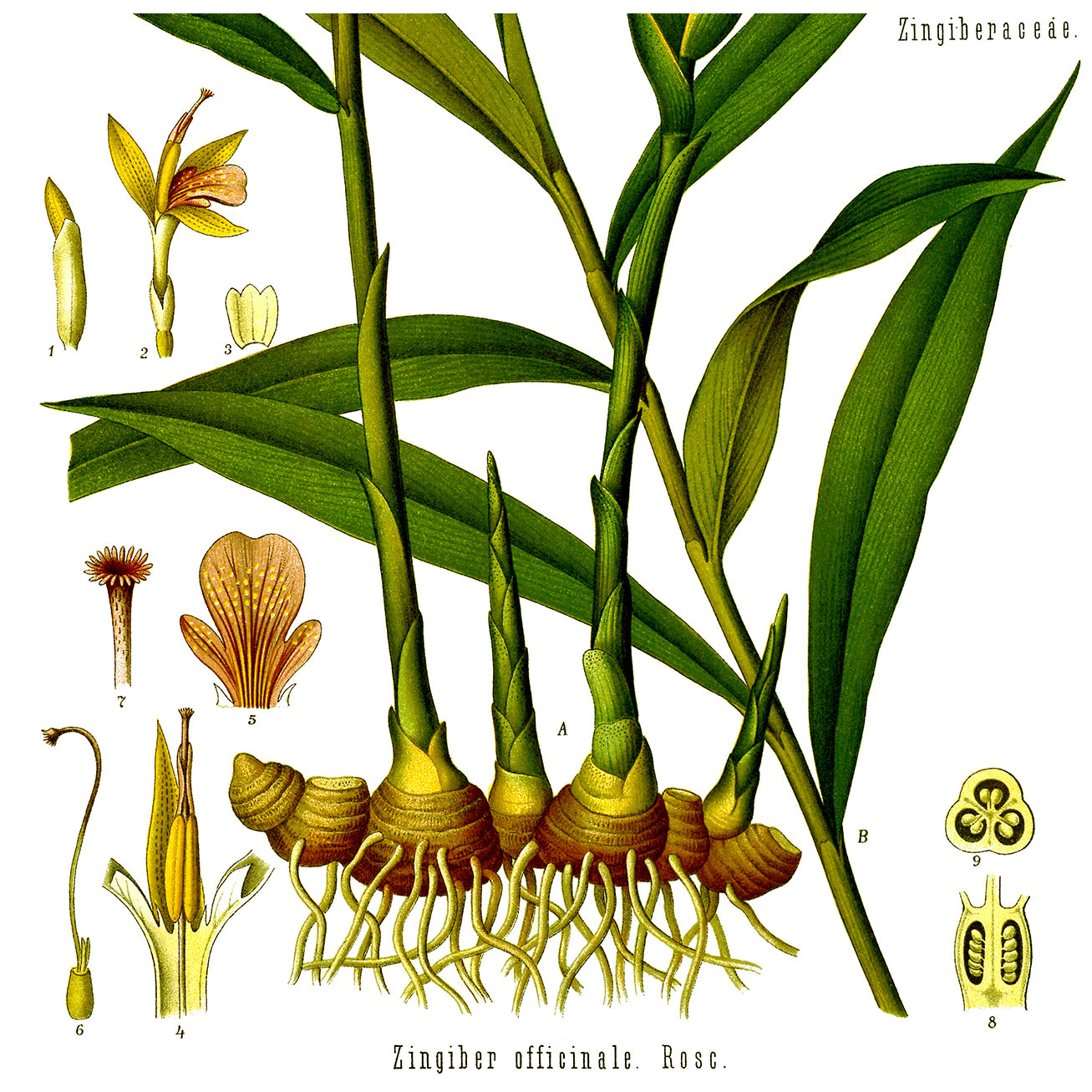Ginger (Zingiber officinale), also known as ginger, imber, periwinkle or ginger root, is a plant species of the ginger genus (Zingiber) within the ginger family (Zingiberaceae). The main underground shoot of ginger, the ginger rhizome (also known as ginger rootstock), is used as a culinary spice or medicinal drug; the pharmaceutical name for the ginger rhizome is Zingiberis rhizoma.
The smell of ginger is aromatic, the taste burning hot and spicy. The main components are an essential oil, resin acids and neutral resin as well as gingerol, a pungent aromatic substance. Gingerol gives ginger its pungency.
Ginger also contains zingiberene, zingiberol, shogaol and diarylheptanoids. The ginger rhizome also contains the digestive, stomach-strengthening, appetite- and circulation-stimulating substances borneol, cineol, the pungent substances shoagol and zingerone as well as vitamin C, magnesium, iron, calcium, potassium, sodium and phosphorus.
Spice
Ginger is one of the best-known culinary herbs and spices, both fresh and dried and ground. For example, a peeled piece of the ginger rhizome is ground on a grater and added to soups or chicken (shortly after cooking or frying). It goes well with poultry and lamb as well as fish and seafood. It is used on its own or in mixtures (curries, chutneys, jams, sauces) as a spice. Ground ginger is also used to refine gingerbread, Printen, rice pudding, fruit salad, tea and fruity cold dishes.
Ginger (Zingiber officinale)
Manu Kumar




